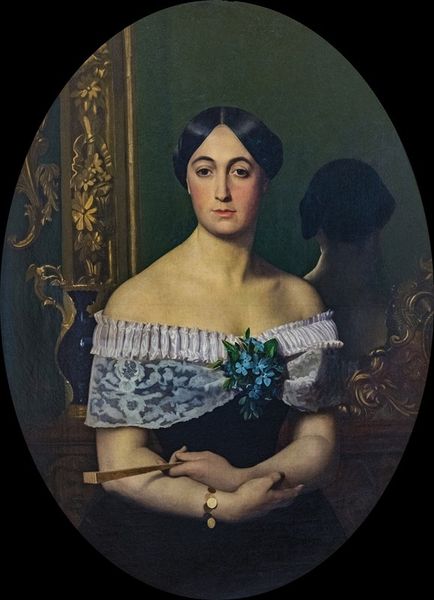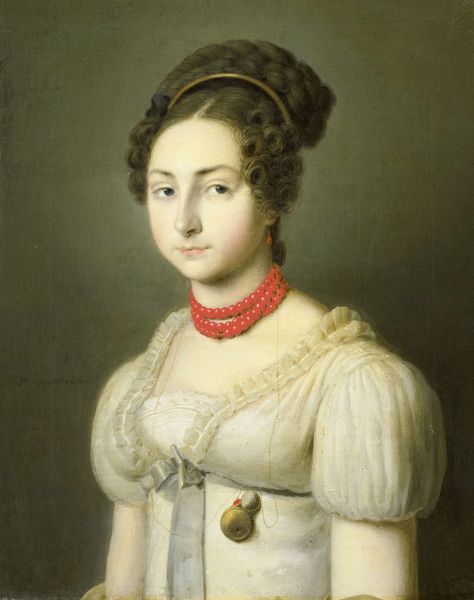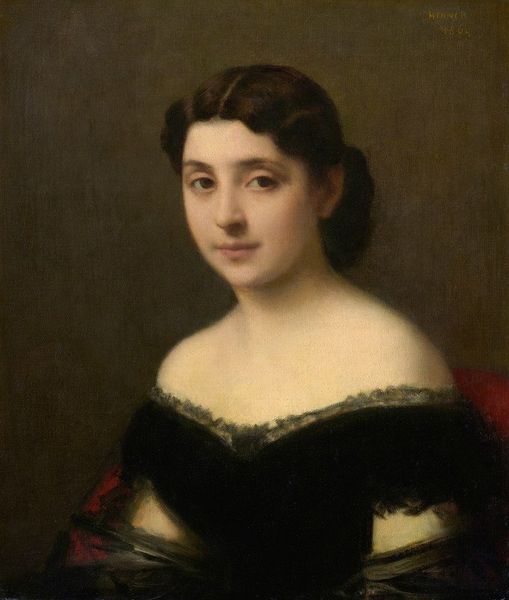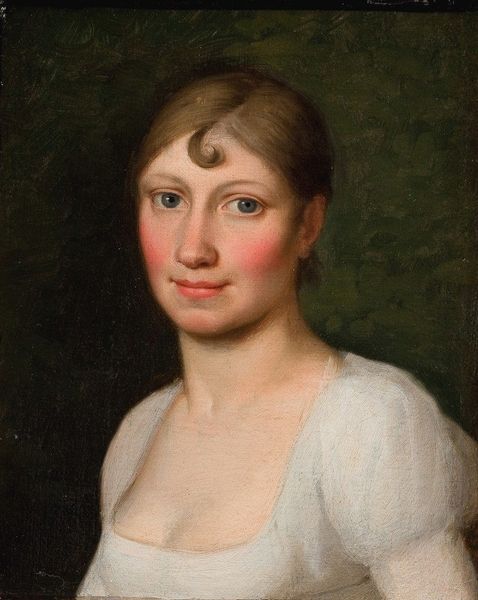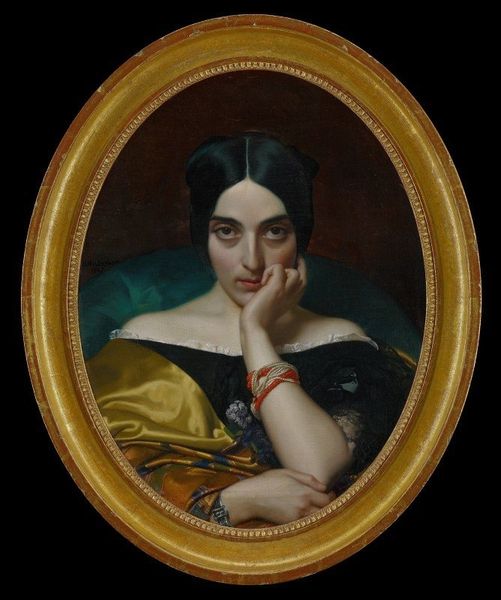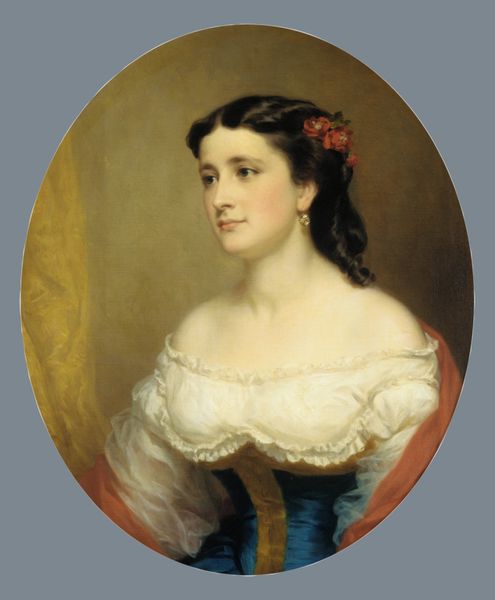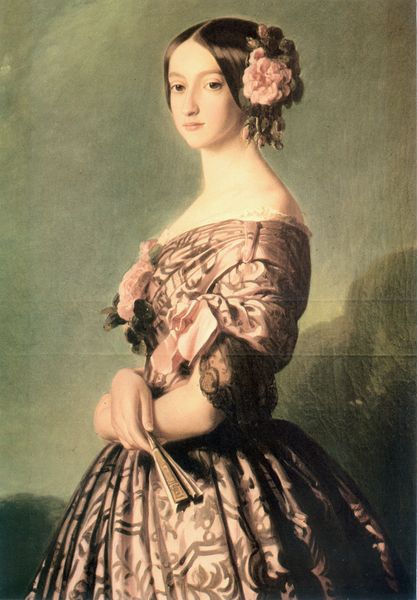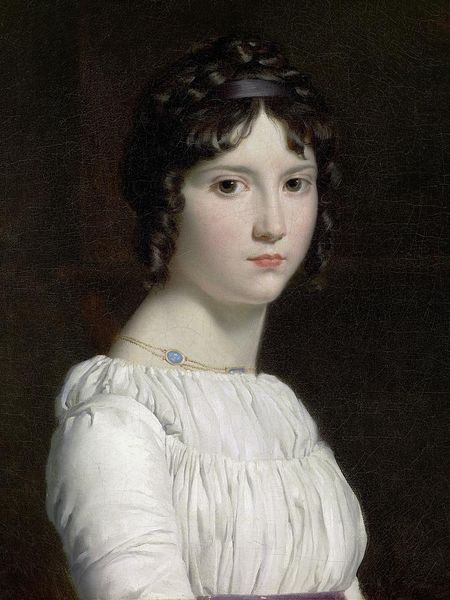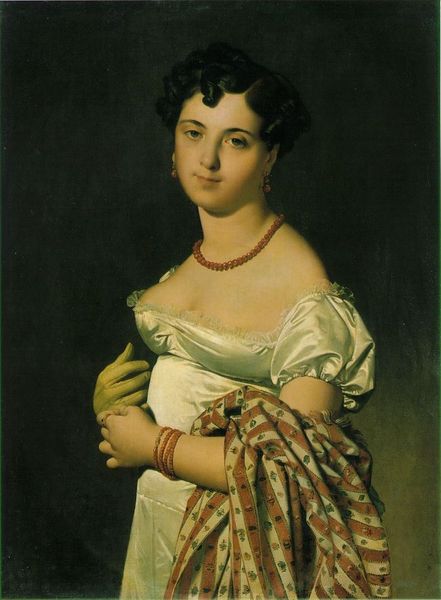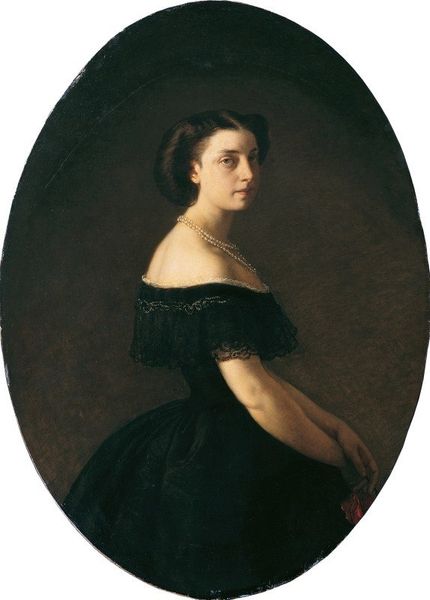
painting, oil-paint
#
portrait
#
figurative
#
painting
#
oil-paint
#
romanticism
Copyright: Public Domain: Artvee
Editor: This is Ferdinand Georg Waldmüller's "Bildnis eines Mädchens," an oil painting portrait. What strikes me is how delicately the light catches the fabric of her dress. What are your thoughts on the work? Curator: I'm interested in the materials and labor involved in its creation. Oil paint itself, as a commodity, speaks volumes about artistic production in the 19th century, but look closer. How was the canvas prepared? Consider the societal role of portraiture and its dependence on specific materials like pigments derived from particular geographic locations. What kind of patron would commission such work? Editor: So, it’s not just about who's in the painting, but who paid for the paints, canvas, and labor, essentially? Curator: Precisely. It shifts the focus. The young woman's white dress isn’t merely an aesthetic choice; the production and maintenance of that delicate fabric represent a significant expenditure of resources and human effort. Consider also that it shows clear evidence of craquelure. That process suggests something further. Do you think that can also tell us about value? Editor: I see what you mean. The cracks speak to age, to the material's response to time. It becomes an object with a biography. So you're saying that it shows time has changed it and possibly added value to it now. Curator: Exactly! Think about it like this: it's an unintentional demonstration of the transformation of materials and, simultaneously, value. Editor: That really changes my perspective. I was focusing on the face, the subject of the artwork. Now, I see the historical and economical narratives embedded in its materials and crafting, which says as much about society at the time as about art. Curator: That’s precisely how looking at materiality opens up so many new lines of thinking.
Comments
No comments
Be the first to comment and join the conversation on the ultimate creative platform.

